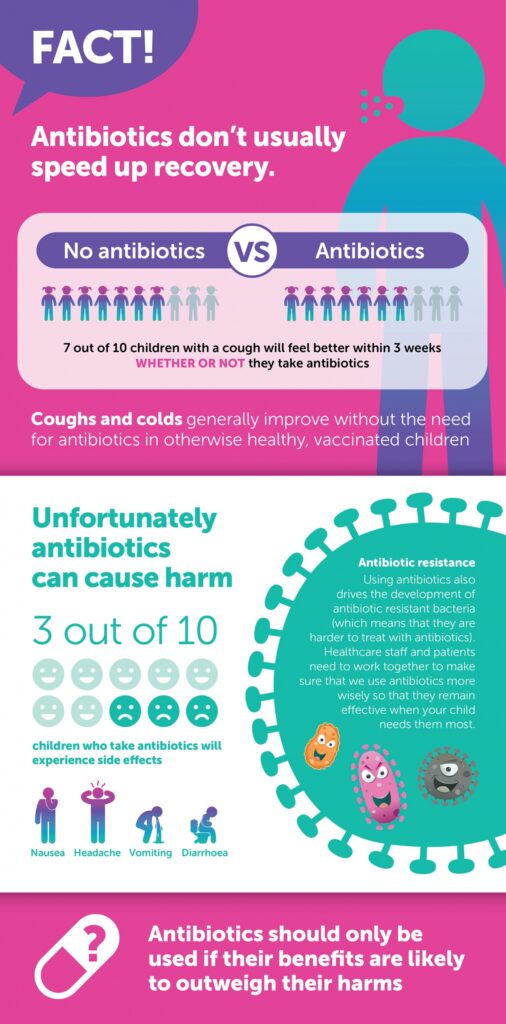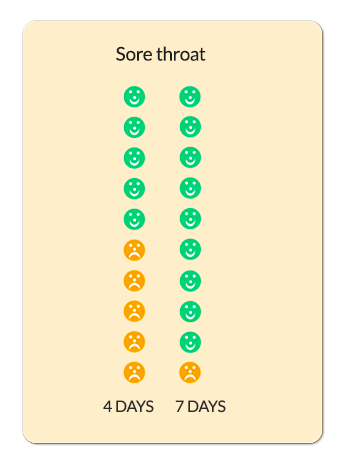Sore throats are extremely common and are often associated with a high temperature.
- Most sore throats are caused by viral infections – if this is the case, your child is likely to also have a runny nose, cough or earache
- If several people are unwell in the same household, this also suggests a viral infection (because viral infections are easily spread)
- Viral infections tend to get better on their own and do not need treatment with antibiotics. Antibiotics may cause side effects such as rash and diarrhoea and can increase the risk of them developing antibiotic resistance
- Watch a GP and health visitor talking about what they would look out for in a child with a sore throat
When should I worry and what should I do?
Call 999 or go to A&E now if your child:
Is going blue around the lips
Becomes pale, mottled, and feels abnormally cold to touch
Has a fit or seizure
Becomes extremely agitated (crying inconsolably despite distraction), confused or very lethargic (difficult to wake)
Develops a rash that does not disappear with pressure (the ‘Glass Test’)
Call 111 or ask for an urgent GP appointment if your child:
Is unable to swallow their own saliva
Is having difficulty opening their mouth
Has laboured or rapid breathing or they are working hard to breathe – drawing in the muscles below the lower ribs, at their neck or between their ribs (recession)
A harsh breath noise as they breathe in (stridor) or when they are upset
Seems dehydrated (sunken eyes, drowsy or not passed urine for 12 hours)
Is becoming drowsy (excessively sleepy) or irritable (unable to settle them with cuddles, toys, TV, or snacks)
Especially if they remain drowsy or irritable despite any fever coming down
Has extreme shivering or complains of muscle pain
Is 3 to 6 months of age with a temperature of 39°C / 102.2°F or above (but fever is common in babies up to 2 days after they receive vaccinations)
Continues to have a fever of 38.0°C or above for more than 5 days
Is getting worse or if you are worried
Information:
You can also contact your nearest Walk-in Centre.
If none of the above symptoms are present:
Your child does not seem to have any symptoms of serious illness or injury.
You can get general advice on the NHS Conditions or from your local pharmacy.
If your child develops any of the symptoms in the boxes above, follow the advice for that box.
What should you do?
- To make your child more comfortable, you may want to give them paracetamol (Calpol) and/or ibuprofen. This not only helps with fever but also reduces pain
- Most children with coughs or colds do not require treatment with antibiotics. Antibiotics rarely speed up recovery and often cause side effects such as rash and diarrhoea. They will also promote the development of antibiotic resistant bacteria in your child
- If your child has a fever for more than 3 days and doesn’t seem to be getting any better, you should take them to see your GP

How long will your child’s symptoms last?
- The chart below shows how long sore throats take to get better in children. The faces represent 10 children who have seen their GP with a sore throat. Green faces are those children whose sore throat has got better within that time period.
- After a week, more than three-quarters of those with a sore throat will be better whether they take antibiotics or not. Most (13 out of 14) who take antibiotics will get better just as quickly as if they hadn’t taken them.

The diagrams above are taken from When Should I Worry.
Where should you seek help?
- If it is non-urgent, speak to your local pharmacist or health visitor.
- Or contact you GP practice and a qualified member of the clinical team will assess if your child needs to be seen urgently. For an urgent out-of-hours GP appointment, call NHS 111.
- You should only call 999 or go your nearest A&E department in critical or life threatening situations.